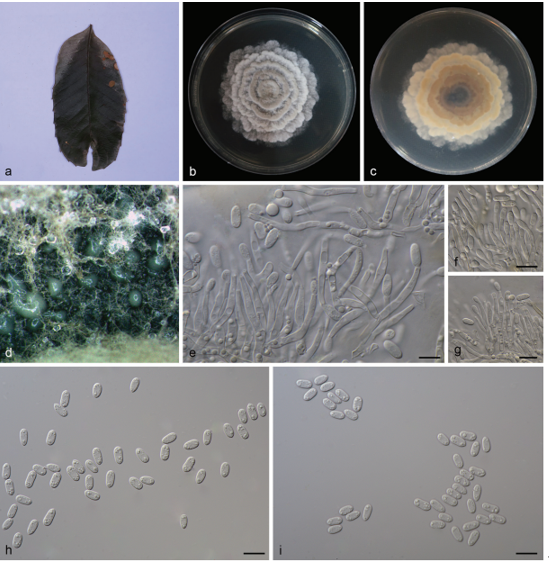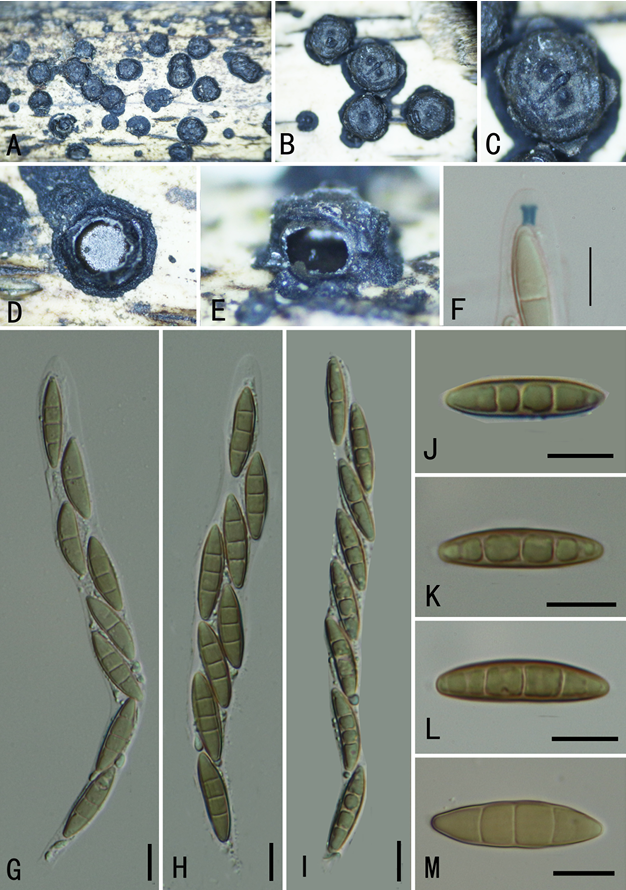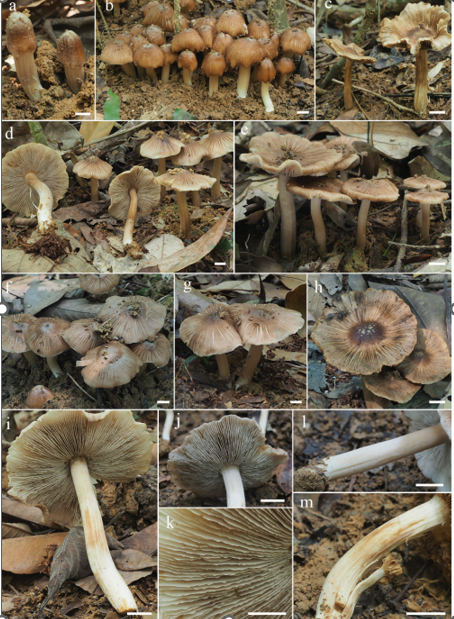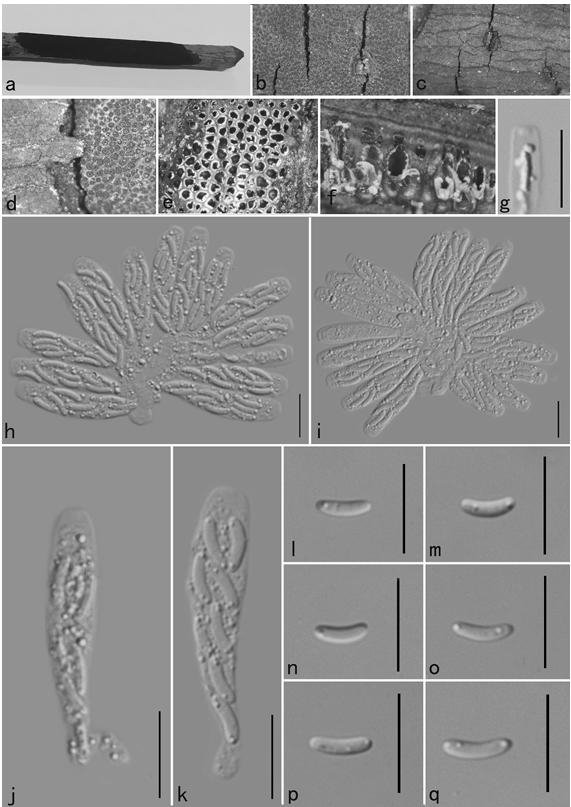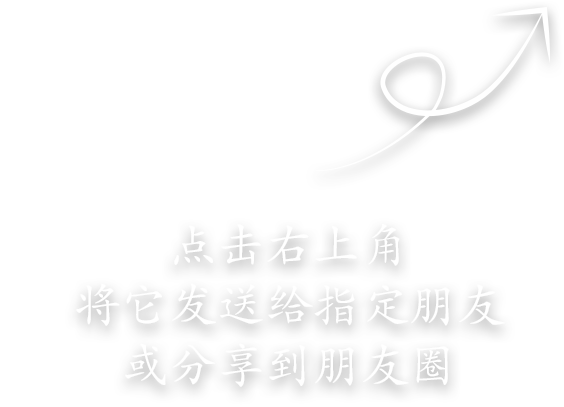Tomentella longiechinuli H.S. Yuan, X. Lu & Y.C. Dai 2020
Index Fungorum number: IF555750; Facesoffungi number: FoF 05634
Holotype: CHINA, Heilongjiang Province, Fenglin National Nature Reserve, on fallen angiosperm branch, 16 October 2016, Yuan 11979 (IFP 019305, holotype), Yuan 12083 (IFP 019306).
Morphological description
Basidiocarps annual, resupinate, adherent to the substrate, pelliculose, without odour or taste when fresh, 1–1.5 mm thick, continuous. Hymenophoral surface smooth, pale brown to brown (6D4–6E5) and slightly lighter than subiculum when dry. Sterile margin often indeterminate, farinaceous, concolorous with hymenophore. Rhizomorphs absent. Subicular hyphae monomitic; generative hyphae clamped, thick-walled, occasionally branched, 4–9 μm diam, without encrustation, pale brown in KOH, cyanophilous, inamyloid. Subhymenial hyphae clamped, thin-walled, occasionally branched, 4–7 μm diam; hyphal cells short and not inflated, pale brown in KOH, acyanophilous, inamyloid. Cystidia absent. Basidia 10–50 μm long and 6–13 μm diam at apex, 5–9 μm at base, with a clamp connection at base, utriform, not stalked, sinuous, without transverse septa, pale brown in KOH and in distilled water, 4-sterigmate; sterigmata 3–8 μm long and 2–3 μm diam at base. Basidiospores thickwalled, (8–)8.5–10.5(–12) × (7–)7.5–9(–10) μm, L = 9.37 μm, W = 8.47 μm, Q = 1.08–1.25 (n = 60/2), subglobose to bi-lobed in frontal and lateral views, echinulate, pale brown in KOH and in distilled water, cyanophilous, inamyloid; echinuli usually isolated, up to 3 μm long.
Habitat: On fallen angiosperm branch.
Distribution: In China.
GenBank Accession: ITS: MK211726, MK211727; LSU: MK446393, MK446394.
Notes: Tomentella griseofusca is similar to T. longiechinuli by the brownish basidiocarps, clamped hyphae, short subhymenial hyphal cells, utriform basidia and the absence of rhizomorphs and cystidia. However, the former species is differentiated by crustose basidiocarps, thick-walled subhymenial hyphae and globose to subglobose basidiospores. T. conclusa resembles T. longiechinuli by the basidiocarps adherent to the substrate, short subhymenial hyphal cells, utriform basidia and the absence of rhizomorphs and cystidia. However, T. conclusa differs from T. longiechinuli by the inflated subhymenial hyphal cells and globose to subglobose basidiospores with shorter echinuli (echinuli up to 2.5 μm long).
Reference: Hai‑Sheng Yuan1,2· Xu Lu1,2 · Yu‑Cheng Dai3 ·
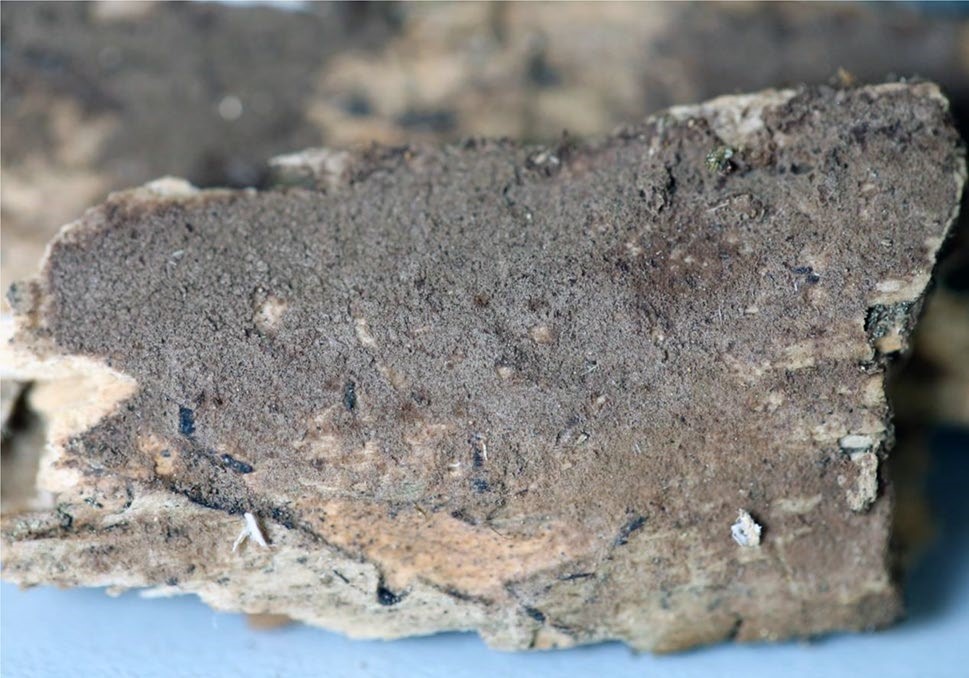
A basidiocarp of Tomentella longiechinuli (IFP 019305, holotype)


